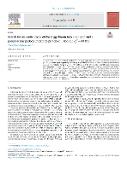Search for an exotic decay of the Higgs boson into a Z boson and a pseudoscalar particle in proton-proton collisions at √s=13TeV

Autor
Hayrapetyan, A.
Tumasyan, A.
Adam, W.
Andrejkovic, J. W.
Bergauer, T.
Chatterjee, S.
Damanakis, K.
Dragicevic, M.
Del Valle, A. Escalante
Hussain, P. S.
Datum vydání
2024Publikováno v
Physics Letters, Section B: Nuclear, Elementary Particle and High-Energy PhysicsRočník / Číslo vydání
852 (18.03.2024)ISBN / ISSN
ISSN: 0370-2693ISBN / ISSN
eISSN: 1873-2445Informace o financování
MSM/LM/LM2018104
MSM/LG/LG14004
Metadata
Zobrazit celý záznamKolekce
Tato publikace má vydavatelskou verzi s DOI 10.1016/j.physletb.2024.138582
Abstrakt
A search for an exotic decay of the Higgs boson to a Z boson and a light pseudoscalar particle (a), decaying to a pair of leptons and a pair of photons, respectively, is presented. The search is based on proton-proton collision data at a center-of-mass energy of root s = 13 TeV, collected with the CMS detector at the LHC and corresponding to an integrated luminosity of 138 fb(-1). The analysis probes pseudoscalar masses m(a) between 1 and 30 GeV, leading to two pairs of well-isolated leptons and photons. Upper limits at 95% confidence level are set on the Higgs boson production cross section times its branching fraction to two leptons and two photons. The observed (expected) limits are in the range of 1.1-17.8 (1.7-17.9) f(b) within the probed m(a) interval. An excess of data above the expected standard model background with a local (global) significance of 2.6 (1.3) standard deviations is observed for a mass hypothesis of m(a) = 3 GeV. Limits on models involving axion-like particles, formulated as an effective field theory, are also reported.
Klíčová slova
CMS, Axion like particles, Higgs,
Trvalý odkaz
https://hdl.handle.net/20.500.14178/2923Licence
Licence pro užití plného textu výsledku: Creative Commons Uveďte původ 4.0 International






